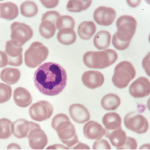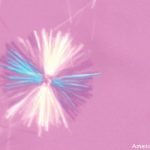One potential target to try to reduce NET formation and subsequently protect lupus patients from that vascular damage is to inhibit peptidylarginine deiminases (PADs), Dr. Kaplan said. In murine models, mice that received PAD inhibitors had improved endothelial function, significant decreases in renal inflammation and proteinuria, and protection against the severity of skin diseases. PAD inhibition also abrogated prothrombosis in these mice.
Understanding the roles of neutrophils and NETs in autoimmunity is an important step in developing future therapies for rheumatic diseases, she said.
“As with any biologic process, there is evidence that NETs can have both immunostimulatory and tolerogenic roles in inflammation. This may be disease and context dependent, and it will be important to better understand these functions to design the best therapeutic targets for specific diseases,” she said.
NETs & ACPAs
Alternate forms of neutrophil cell death exist, said Marko Radic, PhD, associate professor of Microbiology, Immunology, and Biochemistry at the University of Tennessee Health Science Center in Memphis. These include apoptosis and NETosis. Dr. Radic spoke on the relationship between NETs and anti-citrullinated protein antigens (ACPAs), which play a key role in RA inflammation.
In an infection, neutrophils release chromatin in NETs, which trap microbes. “Chromatin can act as a sort of flypaper to which bacteria can attach” in NETs, he said. In inflammation, NETosis may be a mechanism for DNA and chromatin to escape from the cell, and this type of cell death is an area of interest for exploring the triggers of autoimmunity in RA.
“At this point, there is little doubt that understanding what differentiates appropriate versus excessive NETosis holds the key to understanding initial stages in the pathogenesis of RA,” said Dr. Radic in a follow-up interview. “Neutrophils from a number of inflammatory conditions such as RA or lupus are generally more prone to undergo NETosis. In addition, a number of conditions that predispose one to RA, such as smoking, obesity, or certain infections, induce increased levels of NETosis. In turn, NETosis is usually accompanied by the activation of the PAD4 enzyme, which is responsible for citrullinating intra- and extracellular substrates.”
Citrullination of histones may have something to do with disease activity, and two key questions are whether or not citrullinated histones are autoantigens and how PAD4 is regulated, he said. The answers to questions like these may help us better understand RA pathogenesis, because increased levels of ACPAs, the antibodies to those citrullinated proteins, are seen months or years before clinically apparent RA.


